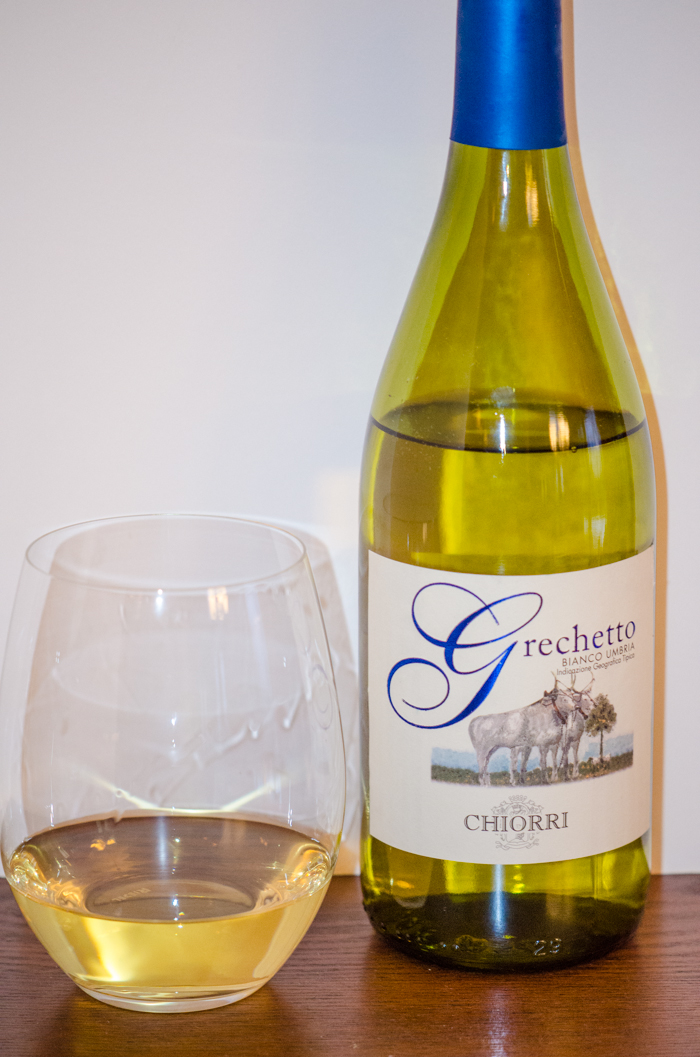
Running southward in the hills of central Umbria along the right bank of the Tiber RIver from Perugia, the Colli Perugini has a climate and exposure that are particularly well-suited for viticulture. This zone includes territory in the Perugian communes of Deruta, Fratta Todina, Masciano, Monte Castello di Vibio, Perugia and Piegaro, as well as San Venanzo in Terni. As in many other wine zones here, evidence exists of the wine-producing activity of the Etruscans and the Romans. Today, some ancient varieties of these indigenous vines are still present, such as Mostiola, Tintarolo, Pecorina and Lupeccio. The soil of this area is, generally, clayey with a strong calcareous component, which can be verified in the light color of the land.
This region was granted DOC status in 1981. A great variety of wines are produced in this zone, whites, reds, roses; varietals and blends; sweet, dry and spumante.
Colli Perugini Bianco wines consist primarily of Trebbiano (65 to 85%), with Verdicchio, Grechetto, Garganega and Malvasia, alone or jointly, making up the remaining 15 to 35%, with Malvasia amounting to no more than 10% of the total. Pale yellow in color with greenish reflections. A characteristically fruity and pleasant aroma. Dry, fresh, nicely fruity. Pair with lighter soups, rice dishes, frittata and fresh cheeses.
Colli Perugini Rosso, Rosato and Novello are made primarily from Sangiovese (65 to 85%), with Montepulciano, Ciliegiolo, Barbera and Merlot, alone or jointly, as the remaining 15 to 35%, with Merlot amounting to no more than 10% of the total. The Rosso is ruby red in color, with a delicate vinous aroma. Dry, full-bodied and fruity. Wonderful with pastas with meat ragu, roast poultry and game, pork. The rose is a lighter rosy color of various intensity, a subtle vinous bouquet, dry, fresh and well-balanced. Serve with crustaceans and shell fish, vegetable dishes, and semi-ripened cheeses.
Colli Perugini Spumante is made from 80% Grechetto, Chardonnay, Pinot Bianco, Pinot Nero, and/or Pinot Grigio, with the remainder from local varieties.
Colli Perugini Vin Santo is the classic sweet dessert wine of Umbria and Tuscany. It is made from semi-dried Grechetto or Malvasia grapes.
The Colli Martani DOC lies in the broad basin south of Perugia, north-east and south-west of the mountains that run from Bettona to Massa Martana, the Colli Martani. This land, on the left bank of the Tiber river is rich in evidence of wine-production in the area, first by the Etruscans and then the Romans.
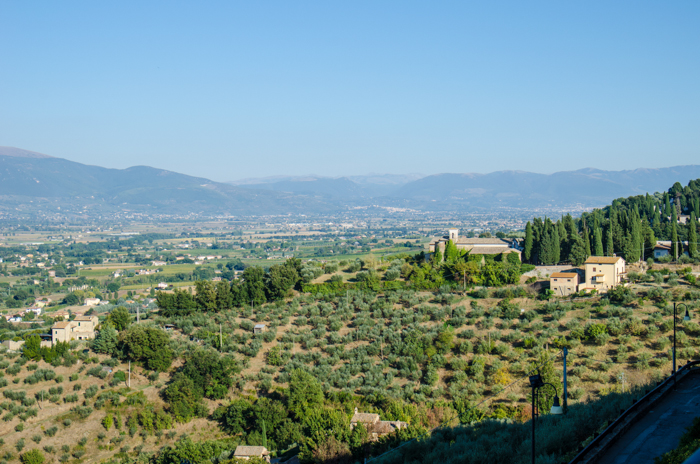
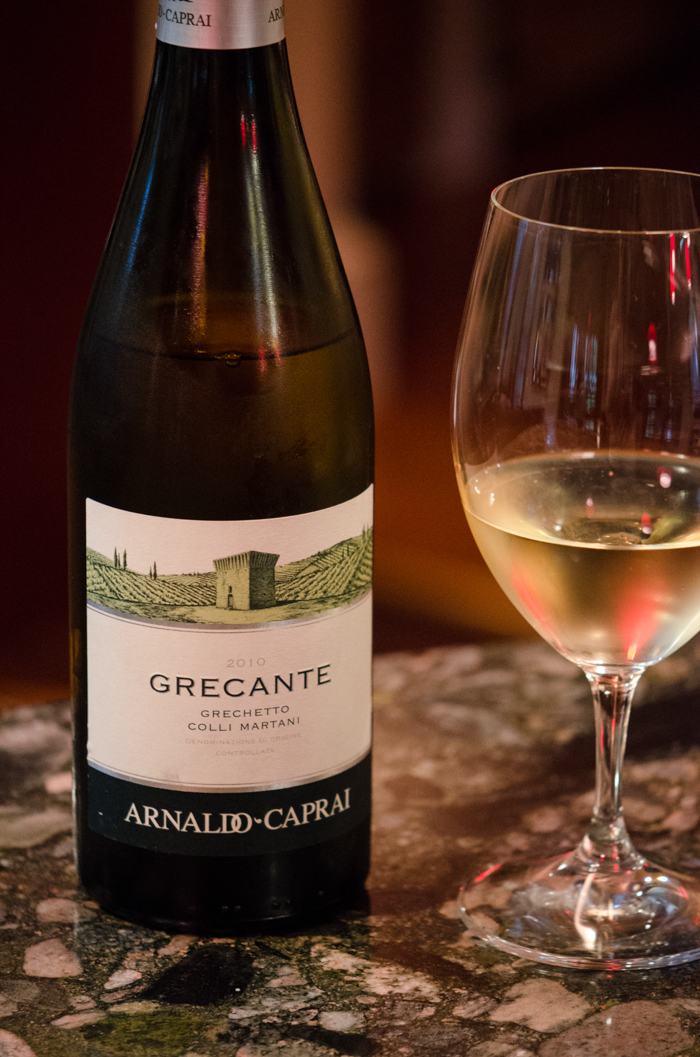
The white wines in this region include a Colli Martani Bianco based on Trebbiano. This wine must consist of 85% Trebbiano, with the remaining 15% made up of Trebbiano Spoletino, Grechetto, Malvasia bianca di Candia, Malvasia, Garganega and Verdicchio, alone or jointly. It is pale yellow in color, with a slightly vinous aroma, dry, tart and fruity. Great with lighter pasta dishes, chicken salad, fish and vegetables.
The white Colli Martani Grechetto must have at least 85% Grechetto; with Trebbiano, Spoletino, Malvasia & Malvasia di Candia, Garganega & Verdicchio, alone or jointly, making up the remainder. This wine may be labelled with the geographical sub-denomination 'di Todi', whenever obtained exclusively from grapes produced in the township of Todi. Also pale yellow, with a delicate perfume, velvety, dry, with a slightly bitter aftertaste. Serve with hot antipasti, and spicy regional pasta dishes such as rigatoni alla norcina.
Colli Martani Rossa is a Sangiovese based wine. Consisting of at minimum Sangiovese, with the remaining 15% made up of Canaiolo, Ciliegiolo, Barbera, Merlot, Montepulciano, Trebbiano, Trebbiano Spoletino, Grechetto, Malvasia, Malvasia di Candia, Garganega and Verdicchio, alone or jointly. The white grapes must not exceed 10% of the overall total of blending grapes. This wine must undergo mandatory aging for at least a year. If it is aged for two years, of which at least one in oak casks, it can be labelled Riserva. Ruby red in color when young, the Rosso wines will exhibit hints of orange and garnet with age. A characteristic fruity nose, with a dry, well-balance palate, slightly tannic and nicely bitter. Serve with hearty pasta dishes, roast pork, aged cheeses.
Awarded DOC status in 1989, this zone is located in southern Umbria, in a region historically known for olive oil production. This production zone includes the hilly territory of Amelia, Narni, Calvi, Otricoli, Montecastrilli, Alviano, Lugnano and Penna in Teverina, Giove, and part of the Terni area. Known mainly for red wines, this zone produces many types, white, red as well as rosé. With updated regulations, this area will soon be known as the Amelia DOC.
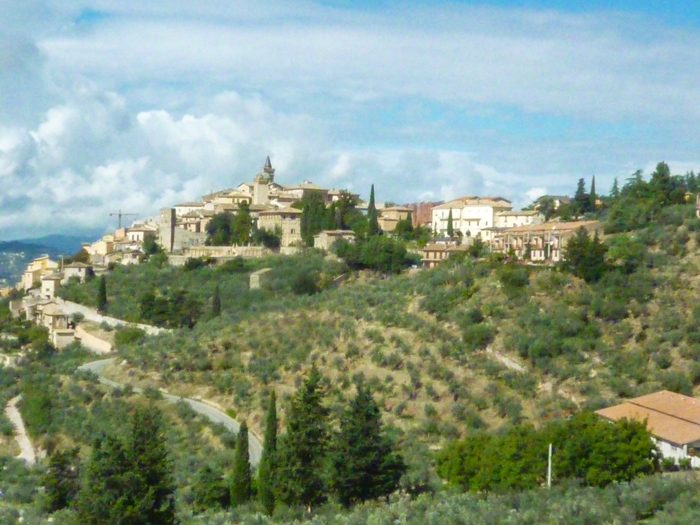
The Colli Amerini Bianco is based on the Trebbiano Toscano grape (70-85%), blended with Grechetto, Verdello, Garganega and Malvasia Toscana. The Colli Amerini Malvasia wine is based on Malvasia Toscana (85-100%), blended with Trebbiano Toscano and other local whites. A good wine to enjoy first courses of fresh-water fish and fried lake fish.
Colli Amerini Rosso is based on the Sangiovese grape (65-80%), blended with Merlot, Montepulciano, Cannaiolo, Ciliegiolo and Barbera. A varietal wine based on Merlot is also produced. A higher alcohol Superiore, as well as a young Novello are also available. The Rosso accompanies fresh salamis, first courses with tomato sauces, grilled or roast white meat, mature cheeses.
The Colli Amerini Rosato (rosé) is also based on Sangiovese and the same mix of red grapes. It pairs well with antipasti, risotto or pasta with light sauces and egg dishes.
The Colli di Trasimeno DOC was one of the first wine zones in Umbria to receive DOC recognition, in 1972. The area, which is rather extensive, lies in the province of Perugia, in the communes of Castiglione del Lago, Città della Pieve, Corciano, Magione, Paciano, Panicate, Passignano sul Trasimeno, Perugia, Piegaro and Tuoro sul Trasimeno, all located in the hills overlooking Lake Trasimeno. The vines in this area have very ancient origins.

The Colli di Trasimeno DOC includes 4 blended white wines, Secco, Bianco Scelto, Frizzante and Vin Santo, as well as a single varietal, Grechetto. The Bianco Secco is served with light hors d'oeuvres, fish soup with light sauces, and roasted and grilled fish.
The Colli del Trasimeno Rosso DOC is probably the best known wines of this denomination. There are five red blends, including Rosso, Rosso Scelto, Rosso Riserva, Frizzante and Novello, as well as varietals Merlot, Cabernet Sauvignon, Gamey, Merlot Riserva, Cabernet Sauvignon Riserva and Gamey Riserva. The Rosso wines pair well with antipasti of traditional cold cuts, pasta with ragù sauce, porchetta, game, and cheese.
A Spumante wine is also produced, perfect for an aperitif.
The Colli Altotiberini DOC was introduced in 1980, and revised in 2005. Located in northern Umbria, this ridge of low lying hills runs from Citta di Castello in the north almost to Perugia in the south, following the course of the Tiber River. Alto translates to ‘high’, giving the name Altotiberini.
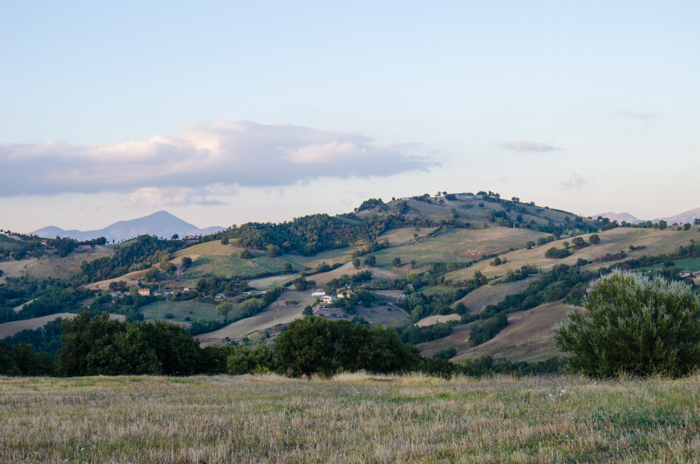
This DOC covers a variety of wines, both varietals and blends, red, white and rose.
Colli Altotiberini Bianco is based on the Trebbiano grape (minimum 50%), with a higher alcohol version designated as Superiore. There are also varietal wines based on the Grechetto and Trebbiano grapes. The Bianco wines are best served with fish.
Colli Altotiberini Rosato is a Sangiovese based rose. A great wine to serve with antipasti, vegetable risottos, spicy fish soup, and eel.
Colli Altotiberini Rosso is again a Sangiovese based blend. Varietal reds from this zone include Sangiovese, Cabernet Sauvignon and Merlot. The Riserva designation indicates aging of at minimum 24 months. Serve with cured meats and cheese, pasta dishes with tomato based sauces, and grilled or roasted meats.


